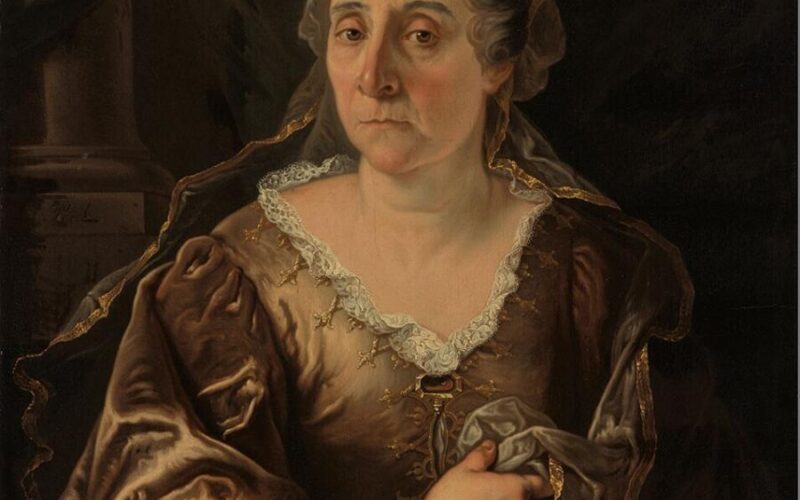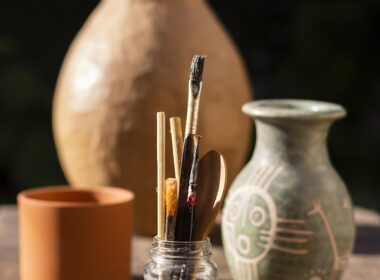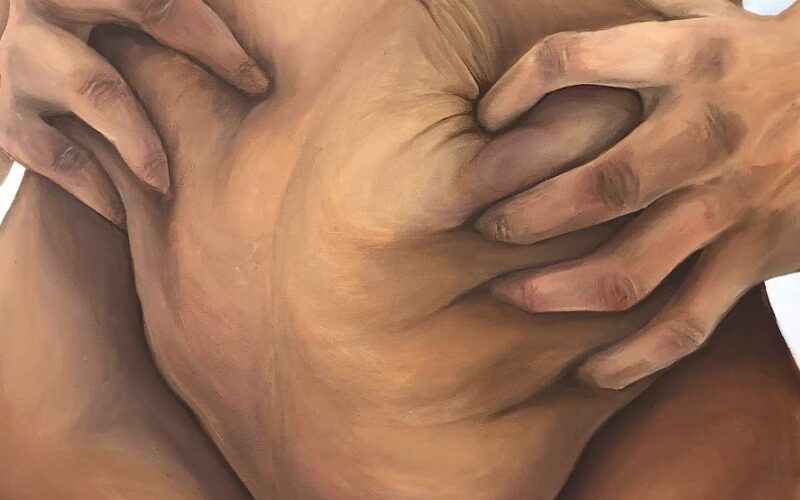
The 17th-century painter who made waves with her still life paintings


Women faced incredible challenges in the 17th century when men held most cards. Yet, against all odds, they survived and thrived, excelling in their careers and family lives. Rachel Ruysch was one of these exceptional women.
Born on June 3, 1664, in The Hague, Netherlands, Rachel Ruysch was a trailblazer. She was a painter, but not just any painter. Her work was groundbreaking, particularly in the field of still-life art. What sets her apart even more is that her paintings fetched higher prices than those of the most renowned male artists of that time.
But Ruysch’s story doesn’t stop there. She was an artist and a mother who raised 10 children while pursuing her passion for art. Her ability to balance family and career was truly ahead of her time. Throughout her career, Rachel Ruysch kept refining her style. She blended elements of Baroque art and a strong sense of realism into her paintings. Her skill in capturing the tiniest details of flowers and other natural things made her so sought after by collectors and art fans.
Rachel Ruysch’s legacy lives on through her captivating artworks. You can find her paintings in museums and private collections worldwide. Her contributions to the art world as a pioneering female painter are still celebrated today. She’s an inspiration for many artists and art lovers.
So, let’s take a glimpse into the life and influences of Rachel Ruysch,
Early years and family influence
Rachel Ruysch was born in The Hague, Netherlands, on June 3, 1664. She came from a family deeply rooted in science and nature. Her father, Frederik Ruysch, was a prominent botanist and anatomist of his time. Growing up in a household filled with the wonders of the natural world, it’s no surprise that Rachel developed a keen interest in the beauty of flora and fauna.
Her family’s influence played a significant role in nurturing her talents. Her father’s collection of preserved plants and anatomical specimens served as early inspiration. The intricate details of these specimens likely fascinated young Rachel and contributed to her later ability to capture the fine nuances in her paintings.
Rachel Ruysch received formal training in painting, an opportunity not commonly available to women during her time. She studied under Willem van Aelst, a respected still-life artist. Under his guidance, she honed her skills and learned the trade techniques. This training would become the foundation upon which she built her remarkable career.
What truly inspired Rachel Ruysch, however, was the world around her. The lush Dutch landscape became her muse with its vibrant flowers, insects, and natural beauty. She was drawn to the delicate details of flowers, the radiance of insects, and the changing seasons. These elements would define her unique style and set her on a path to becoming one of the most talented still-life painters of her time.
In her early life, Rachel Ruysch’s connection to the natural world and her training laid the groundwork for a career that would defy gender norms and leave an enduring legacy in art.
The uniqueness of Rachel Ruysch’s art
Rachel Ruysch’s art stands out for some special reasons. She was exceptional at paying attention to little details. She could paint the tiniest things, like the veins on a flower petal or the shine on an insect’s wings. Her bright colors made her flower paintings look real like they were popping out of the canvas. Rachel was also great at making different textures look just right, whether a rose’s softness or a snail’s shiny shell.
She was a pro at arranging things, too. She’d put her flowers in beautiful vases or natural settings that made you want to look closer. And she had a thing for insects like butterflies and bees; they weren’t just decorations. They meant something – how beauty doesn’t last forever.
Rachel Ruysch left a big mark. Her art skills, attention to detail, and hidden meanings influenced many other artists. Men and women admired her and used her style in their art. Plus, she was a trailblazing woman in art, breaking the rules and opening doors for other women.
Nowadays, her paintings are in museums and private collections worldwide, still amazing people and showing how much of an impact she had on the art world.
A glimpse into some of the famous works by Rachel Ruysch
This masterpiece is a quintessential example of Ruysch’s ability to depict an opulent bouquet accurately. The play of light on the marble table and the intricate detailing of the various flowers and insects make this painting a stunning showcase of her skill.
In this work, Ruysch combines ripe fruits with insects, creating a captivating interplay between the beauty of nature and the inevitability of decay. The ripe fruits symbolize the transient nature of life, while the insects add an element of contemplation.
This painting is notable for its delicate depiction of a bouquet in a glass vase. Ruysch’s ability to render the transparency of the glass and the intricate details of the flowers makes this work a testament to her technical prowess.
This painting is a prime example of Ruysch’s incorporation of symbolism into her art. The inclusion of the deceased frog amidst the vibrant bouquet serves as a reminder of the fragility of life and the presence of death, even in beauty.
Rachel Ruysch’s work has inspired countless artists over the centuries, and her legacy as a pioneering female artist has opened doors for future generations of women in the arts. Rachel Ruysch’s paintings serve as an enduring testament to the timeless appeal of art that seamlessly blends scientific precision with artistic expression.
What makes her art so special and long-lasting?
Ruysch’s paintings were celebrated for their meticulous attention to detail. She possessed an extraordinary ability to capture the finest nuances of her subjects, whether it be the delicate veins of a flower’s petal or the iridescence of an insect’s wings. Her precision and dedication to realism were evident in every brushstroke.
Vibrant Color Palette:
Ruysch’s vibrant and harmonious color palettes breathed life into her floral compositions. She skillfully blended hues to create a sense of depth and luminosity, making her flowers appear almost three-dimensional. The juxtaposition of colors added to the visual richness of her paintings.
Varied Textures:
One of Ruysch’s notable skills was her ability to render a wide range of textures convincingly. Whether it was the softness of a rose, the glossiness of a snail’s shell, or the translucence of a dewdrop on a leaf, she portrayed textures with unmatched skill, enhancing the tactile quality of her art.
Intricate Arrangements:
Rachel Ruysch had a talent for composing her still-life scenes in a visually engaging and harmonious manner. She carefully arranged her floral subjects within ornate vases, baskets, or natural settings, creating compositions that drew the viewer’s eye and conveyed a sense of balance and beauty.
Inclusion of Insects and Symbols:
Ruysch often included insects, such as butterflies and bees, in her paintings. These creatures were not just decorative but added meaning to her works. They symbolized the transient nature of life, underscoring the theme of beauty’s fleetingness.
Rachel Ruysch’s art left an indelible mark on the world of still-life painting. Her dedication to botanical accuracy, exquisite attention to detail, and thematic depth inspired generations of artists. Many later, male and female painters drew inspiration from her work and incorporated elements of her style into their creations.
Her legacy extends beyond her paintings; it includes her role as a trailblazing female artist who defied the gender norms of her time. Rachel Ruysch’s success as a professional painter paved the way for greater opportunities for women in the arts in subsequent centuries.
Today, Rachel Ruysch’s paintings are treasures in museums and private collections worldwide. They continue to captivate audiences, serving as a testament to the enduring allure of her work and the profound impact she had on the art world.
In a time when people thought a married woman had other responsibilities…
Rachel Ruysch’s life was quite a juggling act. She followed her passion for art while also being a mom. But she wasn’t just any mom; she had ten kids and a booming career as a painter. This ability to do both was extraordinary and ahead of her time.
The art studio and caring for her kids went together seamlessly. She made those stunning still-life paintings, full of tiny details and bright colors, while looking after her big family. Her studio was often noisy with kids around, but that didn’t stop her from making amazing art. She showed that women could do great things in their careers and as mothers.
Rachel Ruysch once said,
“I put my colors not on what I see but what I feel.”
This means she painted what was in her heart, including the beauty of everyday life, like flowers and her children’s laughter.
Her talent for capturing the beauty of nature in her paintings and raising a big family is proof of her strong dedication and determination. Rachel Ruysch’s life shows that amazing things can happen when you combine passion, talent, and determination to break barriers.
Want to know more about such amazing women from the past?
Art history and the women in the past never fail to amaze us, not only with their works but also with their dedication to serve in their careers. If you want to read more about such women you can read in our art history section, where every Tuesday we cover women from the past who are still inspiring artists and the art world today.
Also if you have an amazing story and want to share it with our community you can email us the info@artstoheartsproject.com or you can join us on our Instagram community where we actively share and discuss stories and ideas with our community.

















Comments 7